Edmund Goulding (1891-1959) was a British actor-director-screenwriter who traveled to Hollywood at some unspecified date. His first screen credit was as an actor in the 1922 silent film “Three Live Ghosts.” Also, in the early 20s, he wrote several screenplays for star Mae Murray, who was then at the zenith of her popularity following the formation of her production company with her then-husband Robert Z. Leonard.
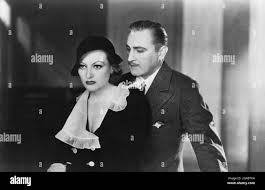
Goulding settled into the director’s chair in 1925 at MGM, directing and writing the silent film “Sally, Irene, and Mary” starring those two powerhouses Joan Crawford and Constance Bennett and the now-faded-from-memory Sally O’Neil. At MGM, where he worked from 1925 to 1935 under Irving Thalberg, he solidified his reputation as a dependable director of comedy and dramas and a noted director of some of Hollywood’s greatest actresses, directing both Garbo and Crawford in “Grand Hotel” (1932). His films, whether at MGM, Warner Bros (1937–1945), or TCF (1946–1958), are always highly polished without any significant directorial imprint. As a result, when Andrew Sarris arrived with his auteur theory, Goulding was downgraded to almost ignominy.
He could turn his hand to pretty much anything on the set of his movies, and he frequently played a massive part in developing the screenplay, art direction, costumes, original score, and songs. Meanwhile, he was directing the actors.
Two of his songs have entered the Great American Songbook/Jazz canon:
Mam’Selle (written with lyricist Mack Gordon with Goulding writing the music and some of the lyrics) was used as background music to some of the Parisian scenes in “The Razor’s Edge.”
Love (Your Spell is Everywhere) (written by actress, screenwriter, and lyricist Elsie Janis, with Goulding writing the music and some of the lyrics)
His only shortcoming was his lack of camera style, and he depended hugely on the great cinematographers that he worked with.
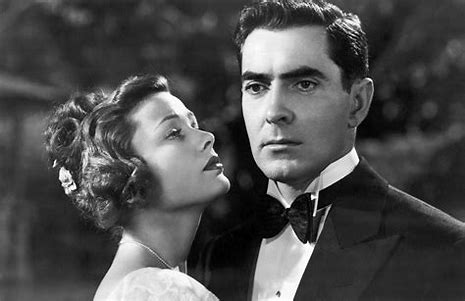
Edmund Goulding is in the record books for FIVE reasons.
REASON NUMBER ONE. Like George Cukor, Mitchell Leisen, Irving Rapper, and James Whale, Goulding was gay, and everyone in Hollywood knew it. He was about as open as Whale and more OUT than Cukor, Leisen, or Rapper. Together with Cukor and Rapper, he was labeled “A Woman’s Director,” a pejorative term that was also a euphemism for “Homosexual.” For instance, the great William Wyler was probably the quintessential “Woman’s Director,” having guided Bette Davis, Fay Bainter, Greer Garson, Teresa Wright, Olivia de Havilland, Audrey Hepburn, and Barbra Streisand to Oscar-winning performances. However, because he was straight, he was never saddled with this rubric.
REASON NUMBER TWO. He holds the dubious distinction of being one of only two directors – the other is Jack Conway (for “Viva Villa!,” “A Tale of Two Cities,” and “Libeled Lady”) – to have three of his films be nominated for Best Picture (“Grand Hotel,” “Dark Victory” and “The Razor’s Edge”) without he being nominated by his peers in the Directors Branch of the Academy. Goulding takes the “honor” to a higher level, however, because while all of Conway’s movies were made at MGM, Goulding’s were all made at different studious (MGM, Warner Bros., and TCF, respectively)
REASON NUMBER THREE. For almost sixty years, he was the ONLY director whose film WON Best Picture (Grand Hotel 1932) without the movie director being nominated by his peers. This changed in 1989 when Bruce Beresford was not selected for the Oscar-winning Driving Miss Daisy.
Edmund Goulding was NEVER nominated for Best Director.
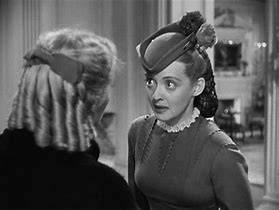
REASON NUMBER FOUR. He directed Bette Davis in more movies than any other director—a total of four (with involvement in a fifth).
That Certain Woman (1937)
Dark Victory (1939)
The Old Maid (1939)
The Great Lie (1941)
He was preparing the groundwork, having co-written the screenplay, for 1943’s Old Acquaintance when he faked a heart attack so that he would not have to work with her a fifth time. He was replaced by director Vincent Sherman, who did a fine job. Goulding retained his screenwriting credit.
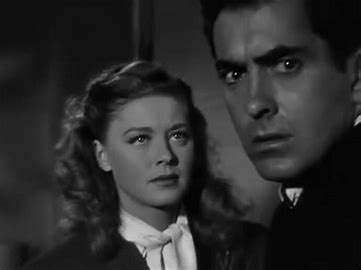
REASON NUMBER FIVE. His magnificent work on “Nightmare Alley” where, working with master cinematographer Lee Garmes, he produced one of the GREAT film noirs, a genre he had never worked in before and would never work in again.
The original Nightmare Alley, a 1947 American film noir starring Tyrone Power and featuring Joan Blondell, Coleen Gray, and Helen Walker, was directed by Goulding and based on the 1946 novel of the same name written by William Lindsay Graham. Power, wishing to expand beyond the romantic and swashbuckler roles that brought him to fame, requested that 20th Century Fox’s studio chief, Darryl F. Zanuck, buy the rights to the novel so he could star as the unsavory lead, The Great Stanton, a scheming carnival barker. Although not a financial success upon its original release, it is now regarded as a film noir classic and a triumph for Goulding. The movie boasted career-best performances from Power and Blondell and a memorable one from Walker, who plays a corrupt psychologist. A car crash and the accompanying scandal ended Walker’s career two years later.
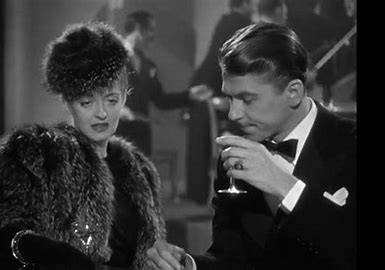
Goulding directed nine of his performers to Academy Award nominations.
Nancy Carroll was the best actress for The Devil’s Holiday (1929-30).
Gloria Swanson was the best actress for The Trespasser(1929-30).
Fay Bainter was the Best Actress for White Banners (1938).
Bette Davis was the best actress for Dark Victory (1939).
Mary Astor was the best supporting actress for The Great Lie (1941).
Joan Fontaine was the best actress for The Constant Nymph (1943).
Clifton Webb is the best supporting actor for The Razor’s Edge (1946).
Anne Baxter is the best supporting actress in The Razor’s Edge (1946).
Edmund Gwenn is the best supporting actor for Mister 880 (1950).
Two of those performers, Mary Astor and Anne Baxter, Won the Oscar for their performances.
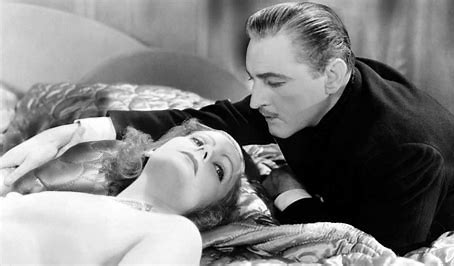
Here is a list of the Films Directed by Edmund Goulding that I have been lucky enough to see over my years of filmgoing.
| Year | Film Title | Rating | Studio | Actors | Cinematographer | Additional Information |
| 1932 | Grand Hotel | A- | MGM | Greta Garbo Joan Crawford John Barrymore Lionel Barrymore Wallace Beery | William Daniels | OSCAR WINNER: BEST PICTURE OF 1931/1932 It is the only film to win the Best Picture Oscar without being nominated in any other category! “I want to be alone”. The stars carry it! |
| 1937 | That Certain Woman | C- | Warner Bros. | Bette Davis Henry Fonda | Ernest Haller | Goulding’s FIRST FILM with Bette Davis. |
| 1938 | White Banners | C | Warner Bros. | Fay Bainter Claude Raines Jackie Cooper | Charles Rosher | Fay Bainter was nominated for a Best Actress Oscar for playing Hannah, a woman who has a son out of wedlock and gives him up for adoption. |
| 1938 | The Dawn Patrol | B+ | Warner Bros. | Errol Flynn Basil Rathbone David Niven | Tony Gaudio | Goulding’s remake of the 1930 Howard Hawks-directed pre-code 1930 film of the same name is better than the original. The story centers around a group of fighter pilots in World War I and features one of Errol Flynn’s finest performances. |
| 1939 | Dark Victory | B- | Warner Bros. | Bette Davis George Brent Ronald Reagen Humphry Bogart | Ernest Haller | OSCAR NOMINATION FOR BEST FILM. Goulding’s SECOND FILM with Bette Davis. Bette suffers bravely in Mink as a socialite who begins to lose her vision due to a brain tumor. Goulding made it well, but like many Bette Davis movies from this period, “Dark Victory” has not dated well. |
| 1939 | The Old Maid | B+ | Warner Brothers | Bette Davis Miriam Hopkins George Brent | Tony Gaudio | Goulding’s THIRD FILM with Bette Davis. The old Bette Davis – Miriam Hopkins rivalry hits paydirt here as Miriam raises Bette’s out-of-wedlock child—a triumph for all concerned. |
| 1941 | The Great Lie | B- | Warner Bros. | Bette Davis Mary Astor George Brent | Tony Gaudio | Goulding’s FOURTH FILM with Bette Davis. A woman raises another woman’s child! Basically a remake of “The Old Maid” with lots of classical music and Astor (Oscar Win) doing a great job at the piano. |
| 1943 | Old Acquaintance | B+ | Warner Bros. | Bette Davis Miriam Hopkins | Sol Polito | Goulding’s FIFTH FILM with Bette Davis. It was too much for him, and he feigned a heart attack shortly after filming began. He was replaced by director Vincent Sherman, who did a marvelous job, the old Bette Davis-Miriam Hopkins rivalry coming up trumps yet again. Goulding retained his screen credit as a co-writer of the screenplay. |
| 1943 | The Constant Nymph | B | Warner Bros. | Joan Fontaine Charles Boyer Alexis Smith | Tony Gaudio | 1924 novel by Margaret Kennedy. 1926 play by Margaret Kennedy and Basil Dean. Screenplay by Kathryn Scola. Oscar Nomination: Joan Fontaine. Famous musical score by Erich Wolfgang Korngold. The Final Will of Margaret Kennedy stipulated that the film could only be shown at universities and museums after its original theatrical run. As a result, it is a tough film to screen. However, a DVD was released under the Warner Archive Collection label in 2011. I stumbled on a rare screening at Turner Classic Movies. |
| 1943 | Claudia | B- | TCF | Dorothy McGuire Robert Young Ina Claire Reginald Gardiner | Leon Shamroy | It is a filmed play that Dorothy McGuire had done on Broadway. She is charming, and the film was so popular that a sequel (NOT directed by Goulding), “Claudia and David,” arrived in 1946. |
| 1946 | The Razor’s Edge | A- | TCF | Tyrone Power Gene Tierney Anne Baxter Clifton Webb Herbert Marshall | Arthur C. Miller | OSCAR NOMINATION FOR BEST FILM. Working from Lamar Trotti’s adaptation of W. Somerset Maugham’s novel, Goulding gets superb performances from Power, Tierney, Baxter (Oscar Win), Webb (Oscar Nomination), and Marshall, who made a sort of mini career out of playing Maugham. The fact that the hero (Power) and his search for transcendent meaning in his life destroy everyone around him goes unnoticed. Beautifully shot by TCF master cinematographer Arthur C. Miller. |
| 1947 | Nightmare Alley | A | TCF | Tyrone Power Joan Blondell Coleen Gray Helen Walker | Lee Garmes | Goulding’s masterpiece. It’s a Film Noir classic that still holds up today. |
| 1950 | Mister 880 | B | TCF | Burt Lancaster Dorothy McGuire Edmund Gwenn | Joseph la Shelle | Sweet and funny. Oscar nomination for Gwenn. |
| 1958 | Mardi Gras | C+ | TCF | Pat Boone | Wilfrid M. Cline | Boone’s Best Movie! |


















